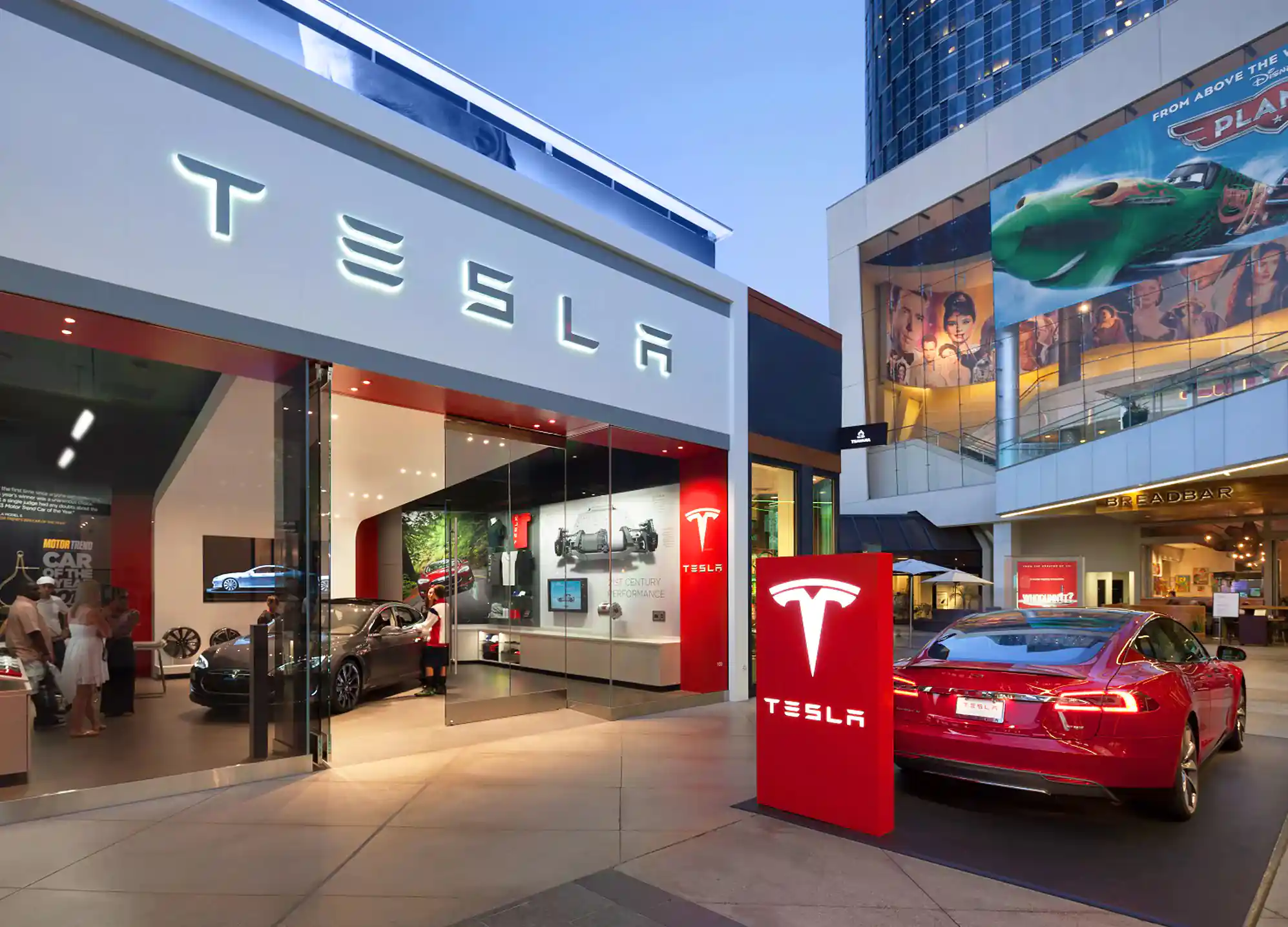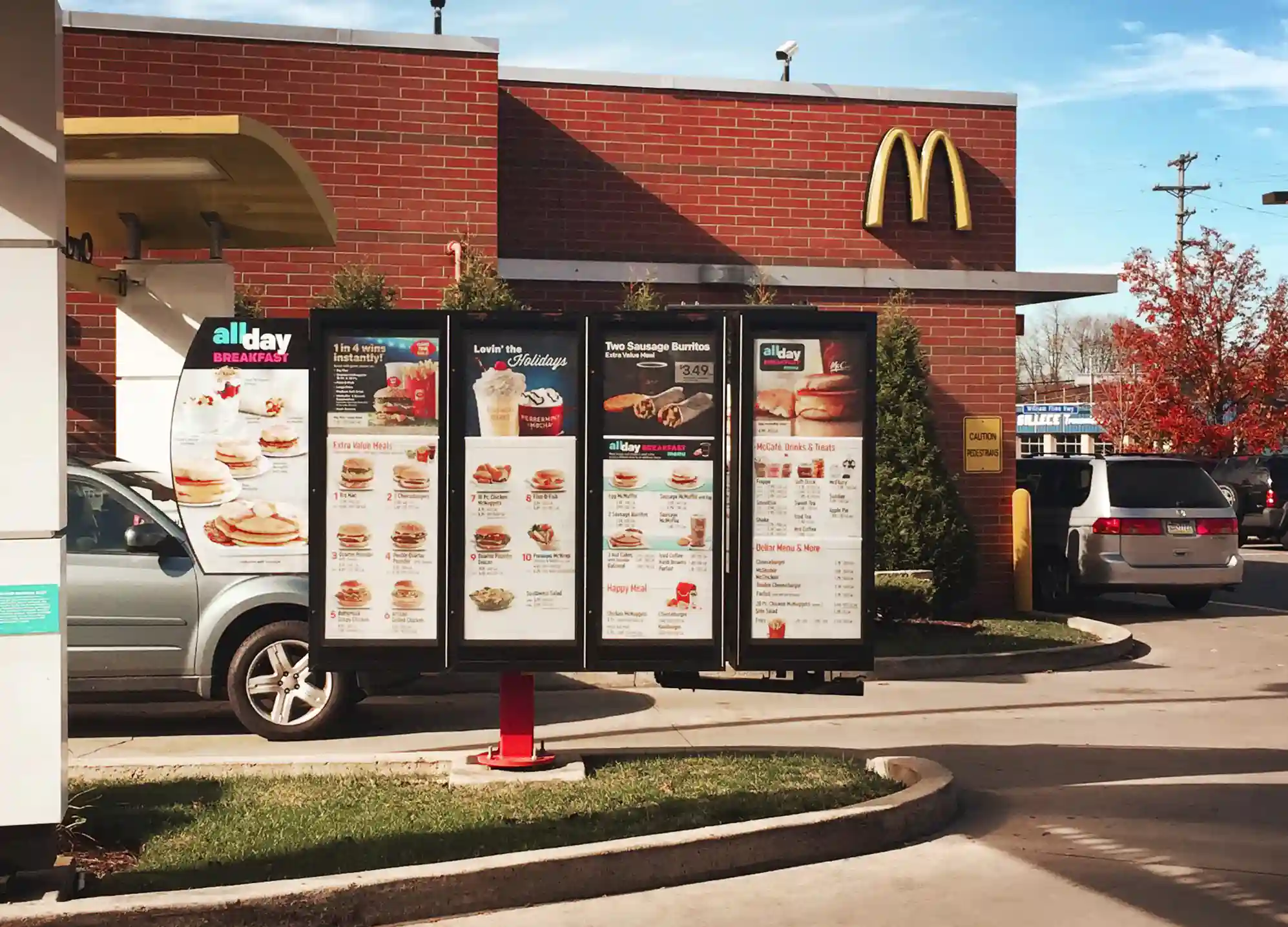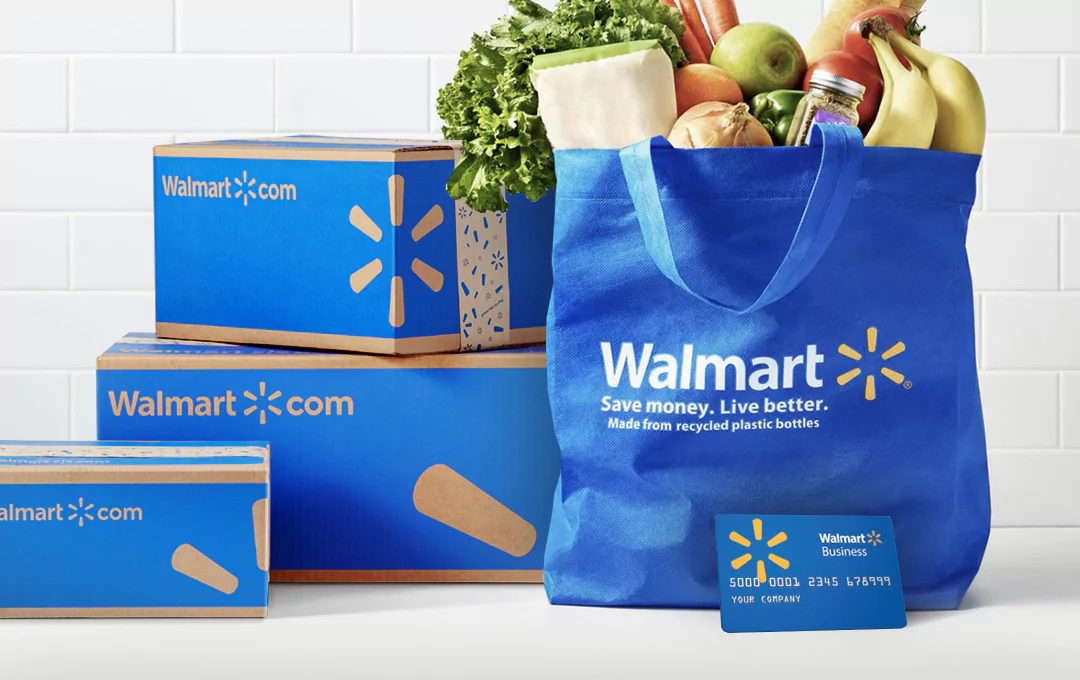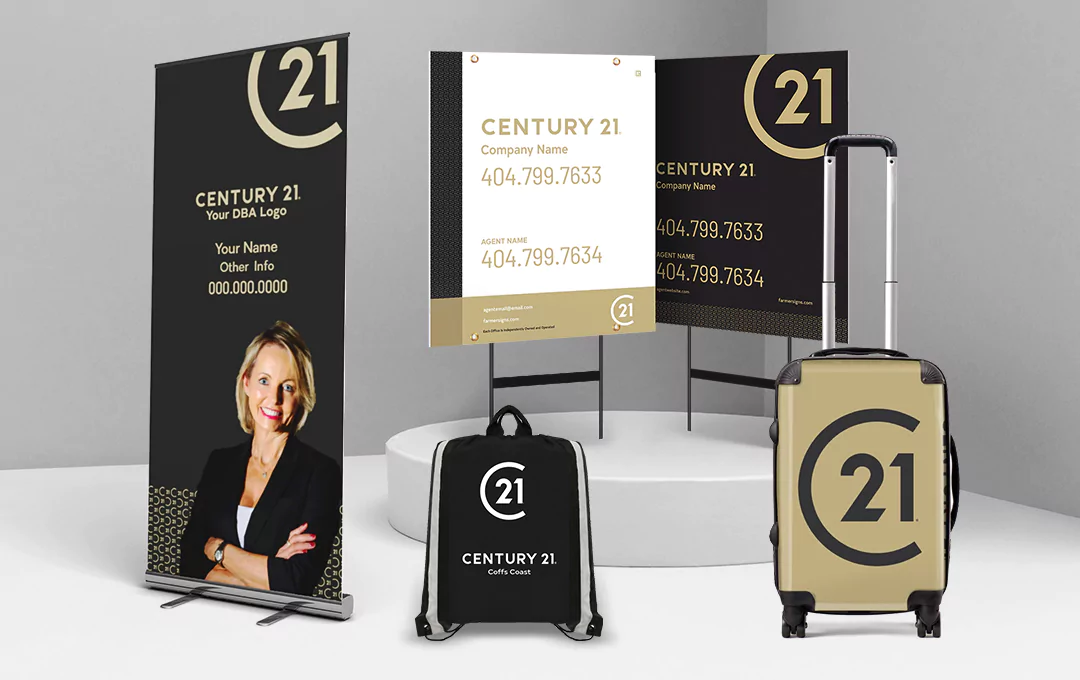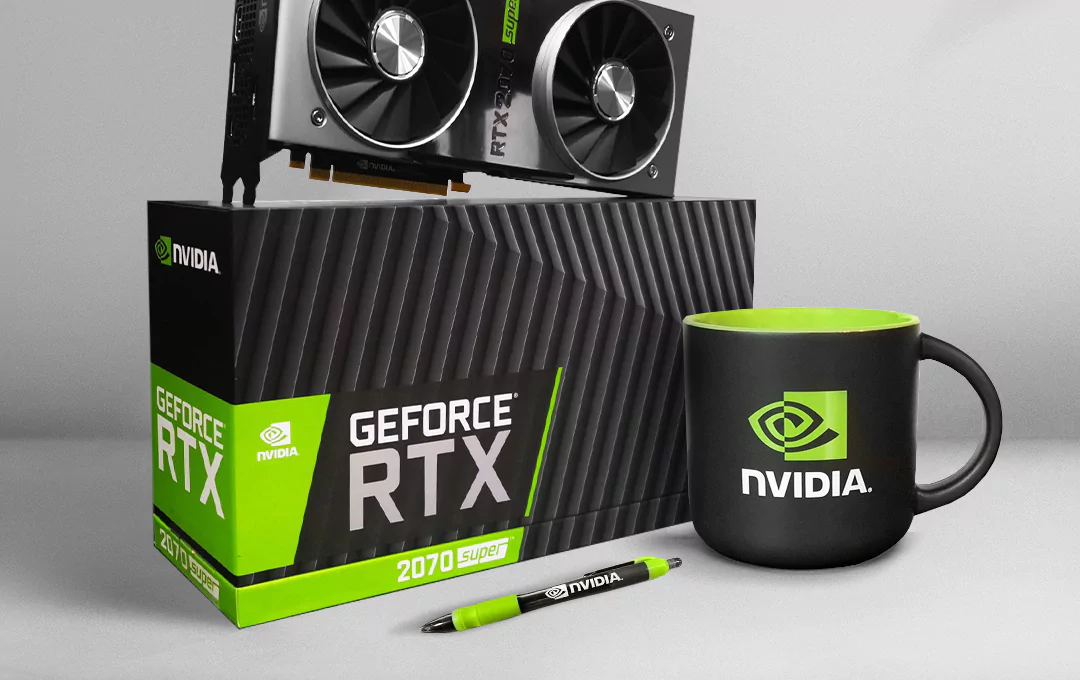What do E-commerce and brick-and-mortar shopping channels have in common? The need to create optimal experiences through retail branding. Learn how.
The pandemic saw a mass closure of retail stores in the US as customer behavior shifted online. Retail stores are making a bit of a triumphant comeback now as customers want to engage in person. They also want to touch, feel (and test) products. Brand awareness is also vital for businesses, making retail branding an absolute must.
At face value, the term “Retail Branding” depicts the image of a small-scale business owner striving to create a special identity for his or her retail brand and gain a larger clientele base than other competing businesses in the marketing industry — Let us stop you right there. That image, though tempting, is a rather inadequate definition of the term because it doesn’t paint a clear picture.
Retail branding is a strategy in business. It means the creation of a single (or multiple) retail brand identity, such as a store brand (physical or digital), where end-users can conveniently identify, locate, and purchase premium products. Simply put, retail branding is when a brand is given a special kind of packaging that enables it to remain at the top of every consumer’s scale of preference.
America’s Trader Joe’s is a good example of branding that speaks to the heart of their target audience in a sophisticated manner. If you’ve ever walked into one of their stores, you would find that it’s smaller than other supermarkets, giving it a more intimate feel.
They also make use of location-specific decor (so, places like Hawaii, would have Hawaiian culture-themed interior decor) Ecommerce cannot replicate these things, and this brand dynamic gives physical retail stores the competitive edge over Ecommerce — those little elements carefully curated to serve every customer who walks into the store with a living brand experience.
Branding itself is not just about selecting the perfect graphic design to fit your company — It also entails the creation of a consistent theme for the brand. It also involves persistently promoting that same theme to establish a significant presence in a particular industry.
Take Tesla for example. Tesla — both manufacturer and retailer of their innovative consumer goods has been able to snub third-party retail dealerships to build their retail infrastructure (known as single-brand retailer ship). Tesla retail stores sweetly combine storytelling, customer experience, and emotion.
Image source: https://www.yenisafak.com/teknoloji
From Tesla, we can learn that when it comes to retail, the goal is to have a brand positioning that attracts a high level of trust from numerous consumers across the globe, whose goals align with their brand objectives, and whose loyalties lie with the consumer goods displayed under their retail brand.
Several factors come into play to determine before the brand of a retail company can be considered top-tier (Again, it is not just about design and or the visual cues!). The world of retail branding has indeed undergone a facelift and taken several twists and turns in this digital age. So, in case you are lost and in dire need of navigation, let this post be your roadmap:
What is retail branding?
It’s the art of introducing your products to consumers under the umbrella of a specific brand name, logo design, packaging, and theme.
What is the importance of branding?
It sets your retail business apart from all others. It creates a lasting impression about what your business has to offer, and what values it projects in the minds of consumers.
What are the types of strategies in retail branding?
A retail brand may adopt any strategy that is fitting for its marketing objectives. The most effective strategies are integrated branding, contract branding, independent branding, and co-branding.
Different Branding Strategies in Retail Branding
As with any aspect of branding, there are foolproof strategies on how to implement them. Whatever strategy you choose to go with may determine the success rate of your brand, as well as its positioning amongst the biggest players of the retail industry.
Without further ado, here’re some of our picks:
Integrated Branding
A high-level consumer appeal comes from integrated branding. Simply put, it’s you positioning your brand alongside that of the manufacturers and wholesalers whose items you stock on your shelves.
Think of it as an inter-departmental business strategy that needs you to create a close relationship between the manufacturers or producers and the retailers, regarding the items on sale. Seen how customers feel super-comfy in any Apple storefront they walk into because the look and feel it offers is similar to that of the main company in California? That’s integrative branding at work.
With integrated branding, the public trusts in the quality and originality of the products you retail because they perceive that your brand has reliable information about the products — I mean, who wouldn’t want to patronize a retailer that never sells counterfeit items?
Contract Branding
Here, the retailer has no direct information about the products’ development but receives it from a reliable supplier. The retailer’s relationship with the supplier is limited to general specifications about the products, such as price, brand, quantity, and quality.
Under contract branding, the retailer simply outsources products from the supplier, relying on his experience, network, and credibility.
Independent Branding
Under this strategy, the retailer buys products in bulk from the supplier and at the lowest price possible. Subsequently, the retailer strikes out on his own and becomes the owner of the goods. Responsibility for the brand — its performance and success — thereafter falls on the retailer alone.
This strategy will sail for retail brands that intend their products to identify as private brands. For instance, Westside is a leading private label company in the Indian retail business with its development of brands like Zudio for fashion items and Star Bazaar for grocery shopping.
Thanks to its top-tier retail branding, the company has been able to outrun its competitors and establish its leadership in the retail business with fantastic metrics:
Co-branding
This is a relatively new strategy where two or more retail brands form a coalition. The central idea can be traced to the common expression “two heads are better than one”. Using this strategy, the particular strengths of each contributing brand are capitalized upon to create upper-class marketing synergy.
The major goal of this co-branding campaign is to maximize profit and gain an operational advantage — Somewhat like the millions of sales Taco Bell made from its Doritos Locos Tacos, the brainchild of its co-branding campaign with Doritos.
With this innovation, Taco Bell was able to sell more than 100 million Doritos Locos Tacos in the first ten weeks of this initiative. The sales were so high, they had to hire an additional 15,000 workers in stores to keep up with the soaring demand.
The initiative excelled because they share the same profile of customers — a young target market with a flair for grab-n-go, junk food that is affordable.
The Complexity in Retail Branding
Today, there are hardly any businesses without online branches that supplement their physical outlets.
As much as the shift from e-commerce to walking freely into a store shows the lifestyle of convenience we all crave and enjoy, retail stores are often faced with the demanding task of choosing the right brand packaging that will stand out from the rest of the competitors.
Next, they must sort out the products underneath their brand image according to their individual and collective brand appeal. They must also identify those with better potentials for success.
Finally, retail stores must wrap it up by matching their brand’s characteristics with the values of their customers, whilst ensuring that each customer enjoys a phenomenal store experience.
The manner with which Target evokes a sense of adventure and discovery in its customers through the Target Run campaign readily comes to mind. They achieved this by driving awareness around their expanded fulfillment options — their pick-up service (Drive Up) in-store pick-up, and same-day delivery (Shipt).
However, the task is more tedious now that business owners must manage their businesses on physical and digital platforms. If you ask even the most iconic retail brands to rate the level of effort they have to channel towards maintaining their clientele base, their responses would be something along the lines of: “shuffling between the physical space and the digital store is both tasking and rewarding.” (Ok let’s be honest, the huge gains are worth the effort by far, but that’s beside the point).
After dealing with the challenges of a branding exercise, the retailers’ reward is the timeless mark their brands ultimately imprint in the minds of their target audience — a mark that signals to their minds and tugs at their heartstrings like, “there couldn’t be a better place to get this product.”
Earlier this year, as soon as the dust of the pandemic started settling a bit, we received a brief from Spice Me, a famous Swiss retail company that specializes in supplying the tastiest and freshest spices.
Spice Me is a fully offline company situated at Banhoffstrasse Road, Zurich where they kicked off plans to channel the bulk of their sales to a digital platform so their business could thrive undisturbed. They had previously worked with a branding agency that delivered a substandard website lacking the most basic features of a professional online store for a company that deals in goods, (in this case, world-class Spices!).
Many users complained to the store via email that they experienced difficulties navigating the platform, placing their orders, selecting their spice preferences, and setting delivery dates.
Frustrated and at the brink of shutting down their retail store, (as they were unable to meet expectations of online shoppers), they got to know of our reputation for project delivery on time and on budget after their business consultant recommended us.
Shortly after they met with us, we began work immediately with a general brainstorming of our expert team (marketers and designers). Then, we came up with a plan for rebranding their online retail platform. We sent Matteo a design brief that contained our novel idea to redesign their brand identity from scratch. Which meant a new brand name, new logo, new packaging designs for their products, marketing collaterals, and a functional website to complement their offline presence.
Matteo commended the hard work of our creative experts and gave us the information we needed to revive their physical brand identity. We also added some flourish to their online presence by developing a digital platform with a simple, functional, and well-designed UI that received several thousand reviews from users irrespective of their location around the world.
Just last fall, Spice Me received numerous nominations for the Tampa Bay International Curry Festival, along with other renowned retail brands like 21 Spices by Chef Asif. Thanks to successful retail branding by our expert team and award-winning designers, Spice Me went from being a local Swiss store to becoming a global phenomenon in the retail industry!
The Challenges in Retail Branding
With the advent of e-commerce, different ways to enhance customer experiences have emerged. Correspondingly, expectations are now higher than ever before especially when they’re having their very first interaction with your retail store. Remember, as a brand, you don’t get a second chance to give a good first impression.
Every retailer’s key aim is to attract a pack of loyalists through a top-notch visual brand identity that evokes a high-value perception of their brand. The challenges primarily revolve around the bid to meet the expectations of the customers.
Digital vs. Physical Brand Expectations
When people approach an online store, their expectations are different from when they walk into a brick-and-mortar store. On one end, they require a convenient, easily accessible, user-friendly website or application where they can sort through an array of products and simply ‘add to cart’.
Customers also want to have access to feedback and reviews as these play vital roles in helping them make more informed, value-driven choices while shopping online.
On the other end, a physical store appeals to the sense of touch of the buyer. Shoppers need to see, hold and closely examine the items they wish to purchase and enjoy a memorable shopping experience in an environment that is conducive to optimum user experience.
Furthermore, the chance to communicate physically with a representative of the brand adds value to the overall customer-store interaction. The time has come for companies to accept that the days where it was either ‘this’ or ‘that’ are long gone.
The modern trend for successful retail branding is the capacity to satisfy the customer expectation on both channels — online and offline (both on digital stores and in physical stores).
Maintaining a top-level brand positioning and a strong clientage like Walmart and Amazon.com have done demands that your retail branding should take on cross-channel efficiency. That is, a solid, consistent, and appealing brand on both e-commerce and physical store channels of interaction with your target audience.
Technology and Sensory Driven Expectations
While shopping online, customers expect to experience the five-star positioning of the brand without having to jump any technical hurdles. Simply put, no one wants to wait ten minutes to view the price list for the items displayed online.
No one wants to open up a dropdown box and find zero options for navigation on the website, and lastly, absolutely no one wants to see images that look like they are from a 90s TV Show.
For retail brands to influence an unchanging positive perception of their brand identity in the minds of consumers and competitors, consistency is key. Retailers of old may have doubted their capacity to be consistent, but modern-day retailers who have witnessed the wonders of the internet can confidently say otherwise.
Brands need to undergo regular upgrades to keep up with global trends as well as groundbreaking technological advancements which the world is witnessing. This is the only way your company can meet consumer expectations both online and offline.
The technologies you buy should be targeted at keeping your retail brand one step ahead of your buyers. Don’t be afraid to invest in the latest most exquisite tech on the market. McDonald’s ‘Dynamic Yield’ deal was a real game-changer in the restaurant retail business and their skyrocketing sales in the last two years shows how much rewards are in the offing for brands that hop on the tech bandwagon.
Image source: https://www.buzzfeed.com/
We must also talk about the impact of the COVD-19 pandemic on retail brands which was quite huge and unforeseen. Sales dropped tragically as the numbers of customers making their way into physical stores dropped drastically.
A large number of retail brands were unprepared for the sudden need for a strong online presence, and consequently, their ability to meet the expectations of their customers took a downturn. It’s no wonder that in most countries where the lockdown was in full swing, many retail brands fell by the wayside, and now they are history.
…and that’s where guys like us come in. With years of experience, brainstorming sessions, and deep commercial insights, we’re come up with a brand blueprint for just about every retail company.
From our experience with business owners, we understand that often, companies try to avoid hiring expert branding agencies perhaps to save cost, which is then negatively reflected on their reputation and profits in general.
If you think that you have little understanding of your industry, audience, or are totally confused, our advice will prove to be invaluable to how you handle your project as a retail brand. For one, we’ll help you avoid the mistake most of our previous clients may have earlier made — mistakes upon which a huge chunk of the budget had laid waste and, most importantly, time!
As part of the preliminary development of projects, we offer our expertise in the initial stages completely free of charge, which helps our clients make their decision without the fear of sunk cost. So, clients hire us solely based on the merit of the expertise of our team and the highest level of creativity we dedicate to each project. Get a free analysis of your project from an award-winning agency here.
Best Practices for Successful Retail Branding
Here are some practices that will surely refine your brand outlook and give it a high-level ranking amongst global competitors.
Analyzing and Understanding Consumer Research Journeys
Whether you operate a single-brand or multi-brand retail company, to hit the sweet spot, you need to analyze and understand the research journey of your target audience.
Consumers rarely take the straight road when making their purchase decisions. So, as a brand with a vision, you need an agency that can follow up closely with a deep commercial understanding of your customers’ wants and needs. Note the products they visit regularly; the aisles they delay more at. Observe them closely.
Let your brand identity be consistent across all channels so that even when they are indecisive about whether or not to make a purchase, they’ll still be within your sales funnel and not that of another brand.
Keeping Track of Global Trends
Don’t delay in hopping on global trends in brand positioning. Always keep tabs on new avenues to garner interaction and brand loyalty. Retailers need to stay on top of emerging branding trends to remain relevant in the eyes of loyal and potential buyers.
Social media also gives them an edge to market their retail brand — one they should be willing to take with both hands. How? Influencer marketing is a good start. Select a few famous faces on different social media, entertainment, or football platforms, strike a brand ambassadorial deal with them and watch your retail business climb the ladder of success just like Uniqlo did.
The Role of Technology
The advent of the e-commerce industry has drastically changed the landscape of the retail industry from simply operating physical stores to cross-channel (both online and physical stores). Now more than ever, retailers are more concerned about creating a visual identity for their brands, engineering positive perceptions, positioning effectively, and enhancing the overall experience.
Technology plays a pivotal role in making it possible for retailers to design and deliver such high-class experiences. Take McDonald’s for instance. The food industry giant deployed tech that makes use of machine learning to suggest food based on customer behavior into their restaurant’s drive-thru menu boards. Swiftly, this million-dollar investment catapulted the company to the top of the fast food industry.
Regarding a retailer’s digital presence, the focus is on helping a consumer to successfully navigate the online world with the same ease as the physical world. This is easy for retail brands that embrace technology as a core element of their identity and allow that to reflect in their ads, and the use of advanced tech in their physical outlets.
Subscriptions and Premium Memberships
Retailers need to create room for user preferences and personalization. Why? Consumers are more likely to consider those brands that offer personalized experiences while they shop, ahead of those brands that do not.
Generally speaking, everyone likes to feel special. Giving out special ‘thank you’ rewards to brand loyalists goes a long way to enhance the reputation of the retail store in the minds of these purchasers.
‘Aliexpress’ ‘New User Coupon’ incentive for new customers where they let them pick an item they can purchase for 1 cent makes an excellent topic for worth-of-mouth brand evangelism that has made them quite the retail industry giant that they are today.
A Good Dispatch System
Prompt deliveries. Customers do not necessarily expect you to deliver even in bad weather. No. Just at a reasonable time.
Ordering products online has become the more prevalent mode of shopping. As a respected retail brand, forcing your customers to wait longer than necessary to get their orders only plants you in the ‘unreliable’ zone, robbing you of brand credibility.
Speaking about dispatching of products, our work with Little Shiny Box shows this.
Little Shiny Box is a Canadian brand that trades in the purest and rarest jewelry pieces. As an up-and-coming name in the jewelry business, they were fast approaching their pre-seed funding, and they needed to dabble into a branding exercise for retail success. So when Lucas (CEO of Little Shiny Box) came to us, he highlighted the following targets that our overall branding exercise should achieve for Little Shiny Box:
- A high level of brand appeal;
- A unique logo that projects the values of the brand;
- Luxurious packaging designs for their products;
It didn’t matter that the timing was short, given that Little Shiny Box had scheduled the official launch of their first collection of jewelry pieces for the next month. Our team of professional branding designers promptly set out to get the task done.
After hours of general brainstorming by our expert team, we came up with a concept that Lucas joyfully described as ‘a winning design.’ We created a logo using the priciest jewel in the world — the Hope Diamond — as the central piece of the design and predicted that the powerful symbol in the logo would aid the brand in achieving its goal of becoming the most sought-after jewelry store in Canada and beyond.
Ever seen a jewelry company make their offerings with a delivery option, but with a fitting before buying? Well, Little Shiny Box did. The jewelry industry itself is luxury and has certain principles upon which all their branding & marketing is built. One of them entails delivery. Delivery with jewelry fitting is considered not a standard method of sale. But it proved to be a justified risk with winning predictions.
After creating a complete branding strategy, our CEO created a marketing development business plan for them (pre-development is free at our award-winning agency, feel free to contact us). This took them to the next level, since the product isn’t cheap, orders for delivery with fitting began to flow in.
Little Shiny Box shared with us how they delivered bulk (jewelry with fittings) orders to wives of top dignitaries and celebrities, which gave their brand strong recognition and support. This is what a branding exercise with a team with a deep commercial understanding of the market is all about.
Oh, and barely four months after the launch, Little Shiny Box went on to secure a feature in the Spring Edition of the Canadian Vogue Magazine. They’ve also gone on to achieve several other accolades and recognition in their industry.
How to Create Powerful Retail Branding
Engaging the services of a professional branding agency is always a good place to start. For a retail brand to thrive in cross-channel consistency and overall brand positioning, it needs to involve a reliable branding agency that possesses the technical know-how of retail branding.
As an award-winning agency, Stan Branding’s team of experts maintains a firm conceptual grip on the relevance of the 4 Ps in marketing which, though age-long, remain relevant in retail branding to date. And we implement them in our clients’ brands seamlessly. These 4 P’s are product, price, place, and promotion.
Product
The product is usually the primary focus of a business as it is the value being exchanged for money. Our approach to retail branding almost always certainly means that the product is made out to be the answer to a question; a solution to a problem.
In simple terms, we present the product in a way that the consumer does not just want to buy it but feels a need to buy it.
Price
We always give good advice (with proven results) to our customers on how to assess the market and take into account the specifics of the market of their industry on their own.
Are you creating a luxury brand or a brand that prioritizes value for money and functionality? From here, the brand may be priced whether high or low according to the type of product and the target market.
Place
A good retail branding strategy uses a location where the product can be easily obtained. With the emergence of technology, the options are a physical marketplace, an E-commerce website, or both (We always recommend both!).
Our graphic designers have a record of producing brand logos that has repeatedly been recognized as the best in their industry and awarded various awards for their high level of creativity, and our expert team is ever ready to design strong websites that can withstand the highest levels of traffic.
Promotion
This is where you scream it on the rooftops that your brand has products available on sale that is curated with them top of mind and in your hearts. Storytelling also plays a huge role in achieving this. The promotion phase includes the (branding) packaging of the product and how it is presented to the consumer.
It works a treat, especially if you’re looking to gain brand loyalists that are repeat customers. Colgate has proven this time and time again with their fresh take on how they market their brand to customers. Rather than simply wave their offerings in the faces of customers, they kicked off an oral care center that displays visual content on oral hygiene.
Now, Colgate is not just about their toothpaste, but they’re also a trusted brand when it comes to all-round oral hygiene. Now, that is a true mark of a company that promotes their brand excellently!
Again, we have helped our clients not only develop their retail branding from scratch with our professionals who specialize in creating winning designs. When looking to design exquisite brand identities and eye-popping product packages that immerse customers in a feel of the product even before unboxing, it’s best to hire professionals since a large budget is usually involved in this kind of project.
Another point to note is that you require the services of professionals whose skills match their attitude to the project, and commitment levels. We offer a free pre-development of your project at our award-winning agency, and you can always tap from our expertise to gain a good grasp of what steps to take and how best to go about it.
Wrap Up
Ultimately, retail branding has a lot to do with creating experiences for your customers that could balloon your brand into a global sensation. As an award-winning design agency, we have mastered the art of retail branding (In art terms, if you let your brand be our canvas, you can expect a Picasso-level artwork!).
As proof of our high level of creativity and application, we have a host of unique completed projects by our award-winning branding agency with proven results.
All divisions in our agency — expert designers, skilled marketers, and project managers — work smartly (and tirelessly) to develop a brand identity that singles out your retail company from the rest of the pack.
Our advice? Don’t be caught on the wrong side by waiting until the ultra-competitive landscape of the retail market tosses your brand aside. Fill out a short brief and get a free unique pre-development from our specialists for your projects now.




